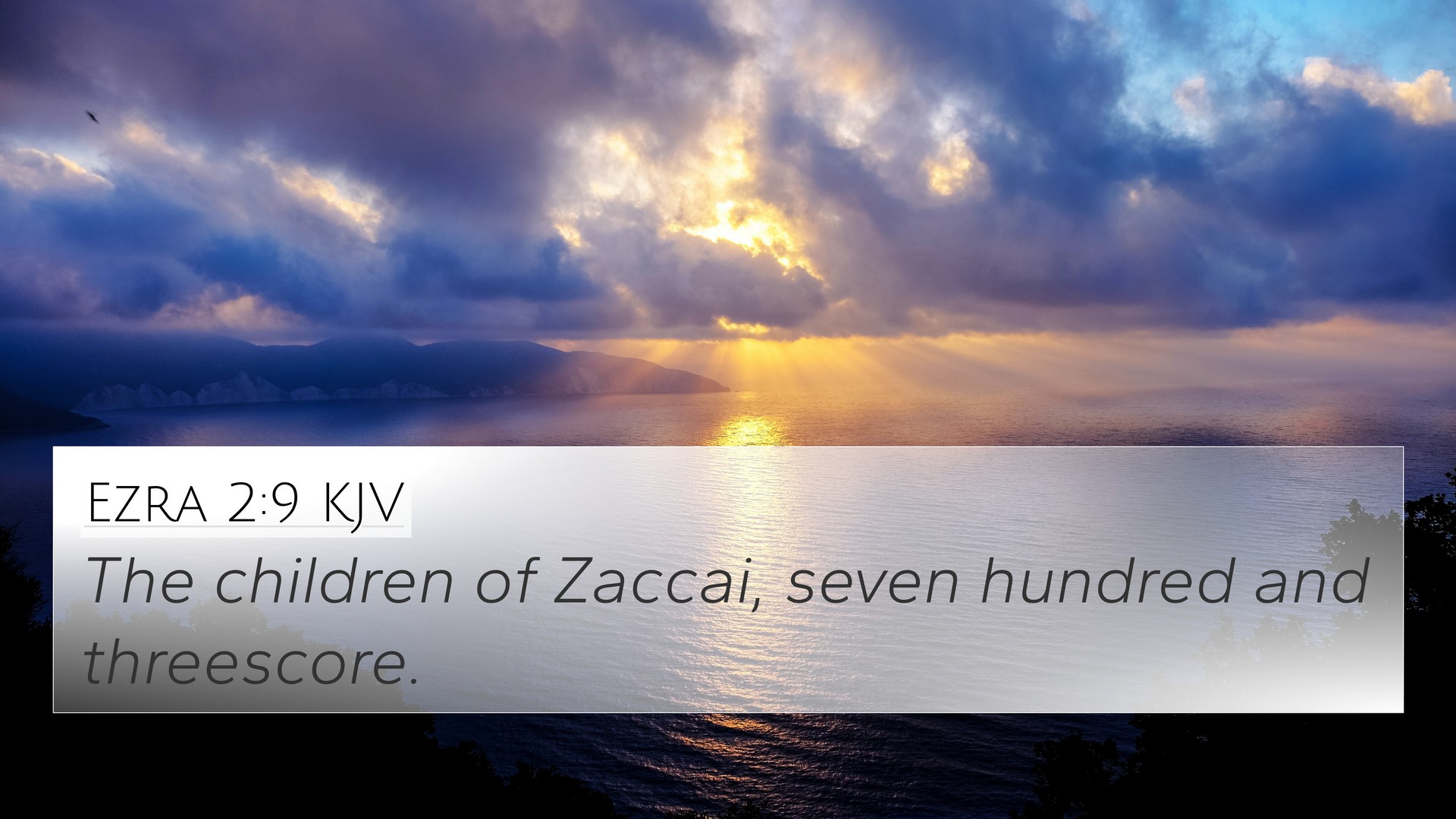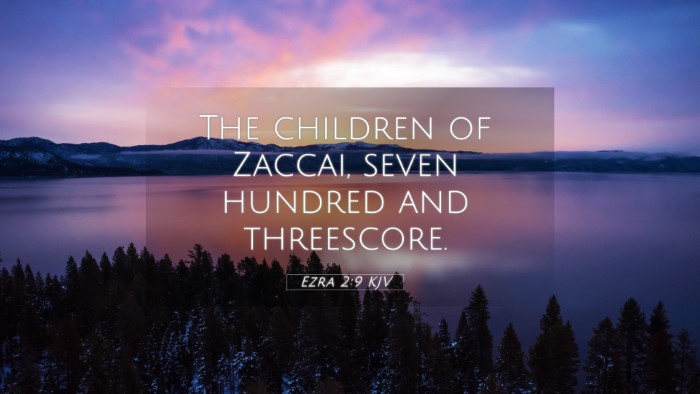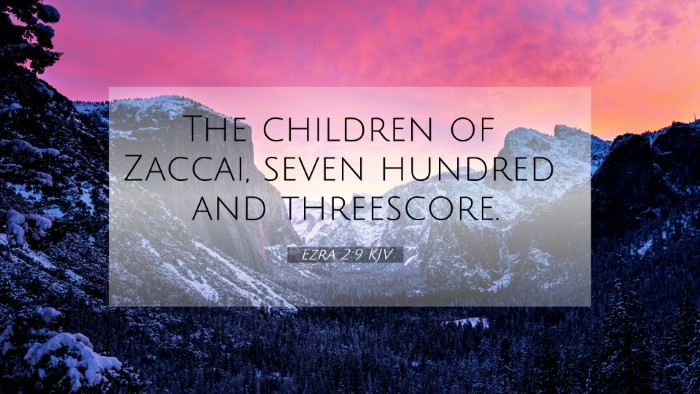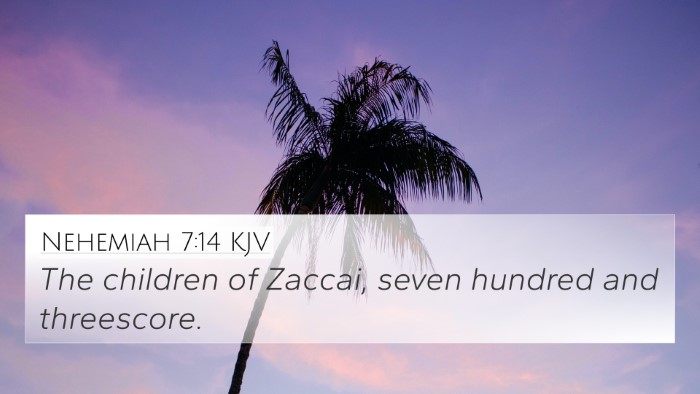Understanding Ezra 2:9
Ezra 2:9 lists the descendants of certain individuals who returned to Jerusalem after the Babylonian exile. Specifically, it mentions the total number of the sons of Shephatiah, totaling 372. This verse may seem like mere statistical data, but it brings several important aspects of Biblical understanding.
Significance of the Verse
This passage showcases the importance of genealogy in the Hebrew Bible, as genealogies establish lineage, heritage, and the fulfillment of God’s promises to His people.
Commentary Insights
- Matthew Henry: He emphasizes that the numerical accounts serve not only to record the people of Israel but also to demonstrate God’s faithfulness in preserving a remnant despite exile and adversity.
- Albert Barnes: Barnes draws attention to the significance of the record as evidence of God’s promise to restore His people. He notes how the return is crucial for the rebuilding of the temple and the reinstatement of worship.
- Adam Clarke: Clarke indicates that each name and number reflects a divine purpose, reminding the reader that every family plays a part in the larger narrative of Israel's restoration and God’s covenantal cycle.
Connecting Ezra 2:9 with Other Scriptures
Ezra 2:9 can be cross-referenced with various other Bible verses that highlight themes of restoration, genealogy, and God's covenant. Here are some significant references:
- Nehemiah 7:14 - Another account of the people returning to Jerusalem, linking the themes of restoration.
- Psalm 126:1-3 - Reflects on the joy of returning to Zion, echoed in the accounts of Ezra and Nehemiah.
- Isaiah 44:28 - Prophecy regarding the call of Cyrus, indicating God's sovereignty in restoration.
- Jeremiah 30:3 - God’s promise to bring back His people, relevant to Ezra’s narrative.
- Haggai 1:12-14 - Encouragement for the people to rebuild the temple, providing a direct connection to Ezra's mission.
- Matthew 1:12 - A connection to genealogy with specific emphasis on the importance of lineage leading to Jesus.
- Romans 11:5 - Discussion of God's remnant, which ties back to the returnees after the exile.
Thematic Connections
The themes present in Ezra 2:9 resonate with many narratives throughout the Bible:
- Restoration: The idea that God restores what has been lost is threaded throughout scripture.
- Faithfulness: God’s unchanging nature in keeping His promises is an underlying theme, seen in both the Old and New Testaments.
- Heritage: The importance of genealogical records in establishing community and identity resonates with other scripture interpretations.
Useful Tools for Bible Cross-Referencing
For those looking to delve deeper into cross-referencing Bible verses, several tools can be employed:
- Bible Concordance: A comprehensive alphabetical list of key words and their occurrences in the Bible.
- Bible Cross-Reference Guide: A systematic layout to navigate connections between verses easily.
- Cross-reference Bible Study Methods: Various methodologies can enhance understanding and facilitate deeper study, such as thematic reading or verse mapping.
Conclusion
In conclusion, Ezra 2:9 serves as a crucial reminder of God’s faithfulness in the covenant with Israel. It opens discussions about lineage, restoration, and the broader biblical narrative that spans both the Old and New Testaments. Through careful study and cross-referencing, readers gain insight into how this single verse fits into the tapestry of biblical history, theology, and God’s enduring relationship with His people.



